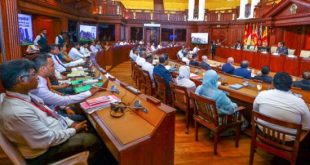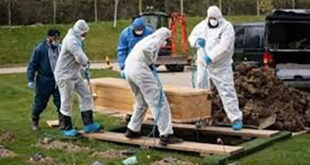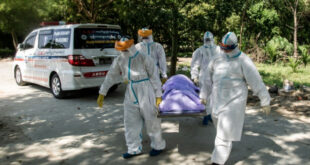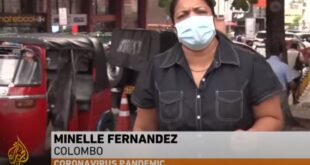The government conducted an Environmental Impact Assessment (EIA) before the resettlement of the displaced Muslims in Marichchikatti, Mannar and beyond, Minister of Economic Development, Basil Rajapaksa, told Ceylon Today.
The minister's remarks contradict the assertion by the ultra-nationalist groups, Bodu Bala Sena, and Sinhala Ravaya, which have waged a campaign against the resettlement of Muslim IDPs in Mannar.
The minister said, "We studied the entire landscape before it was gazetted right after the war."
He added the Presidential Task Force (PTA), which was formed to handle the resettlement at that time, had carefully studied the area before implementing it.
"They held several committee meetings where experts on environment were present," he said.
"We resettled not only the Muslim IDPs, but the Tamil and Sinhala IDPs as well," he added.
He said the Muslim IDPs of the '90s were resettled in their own habitat. "Either they should be resettled in their own village or close to their village," he pointed out.
When asked why the forest land was cleared for resettlement, he said he will reveal the correct answer to that question, 'very soon.'
The minister, however, said even the Mahaweli scheme and the Maduru Oya project were completed after clearing forest land. "Even Wellassa was a thick jungle and it was cleared for resettling of the Sinhala people."
"Be humane," he said, adding, "These IDPs have gone through severe hardships and they also need to live like others."
When asked about alleged encroachment by about 73 Muslim squatters inside the Wilpattu Sanctuary, the minister said the relevant officials have filed a case and the matter has been taken up at the Magistrate's Court.
He said the major part of the resettlement programme was handled by the PTA after a careful study.
"When you look at the Wilpattu National Park (WNP), the park ends with the Modaragamaaru. One-kilometre stretch from the river is the buffer zone and there, you could see private lands and private houses. Even in Sigiriya and Kalawana, there are houses and private lands in the buffer zones.
The minister said there is an old mosque in the buffer zone of Willpattu.
"The government did not let people settle beyond the buffer zone.
"These lands were gazetted right after the war came to an end. We used the GPS to scale the area and for the first time, an EIA was carried out in the northern region with the United Nations Development Programme (UNDP) and I personally saw to the resettlement of the IDPs," the minister said.
 Sri lanka Muslims Web Portal Diversity and Inclusiveness
Sri lanka Muslims Web Portal Diversity and Inclusiveness




